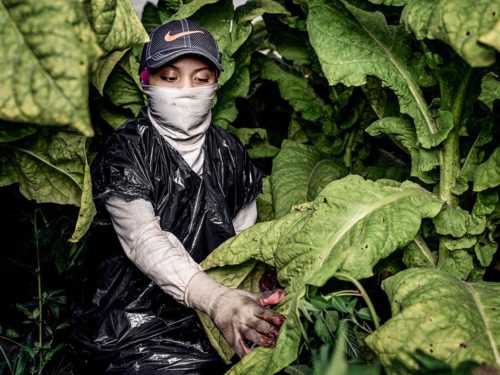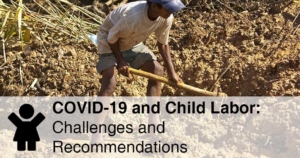COVID-19: How Do We Deal with the “Ticking Time Bomb” in Agriculture?
It’s been referred to as a “ticking time bomb” – the Corona virus and its potential impact on farmworkers– the incredibly hard-working men, women, and children who our fruits and vegetables and provide other vital agricultural work. Farmworkers perform dirty back-breaking work and are notoriously underpaid for it and at great risk from COVID-19.
Farmworker advocacy groups that NCL works with or supports like Farmworker Justice, the Coalition of Immokalee Workers, the United Farmworkers of America (UFW), the Farm Labor Organizing Committee, and a national cadre of legal aid attorneys have spent weeks strategizing about ways to protect the community which they know is especially vulnerable to the virus.
Advocates have reached out to administration officials and Congress for desperately needed resources to support impoverished farmworker with little to show for it. Despite their essential contributions to the economy, farmworkers have been cut out of the emergency relief packages. The Trump administration has even revealed plans to lower pay for agricultural guest workers who sacrifice home and family to come to the U.S. to perform arduous farm labor. Advocates fear that decreasing guest worker wages would drive down low wages for farmworkers already living and working in the U.S.

“Sofia,” a 17-year-old tobacco worker, in a tobacco field in North Carolina. She started working at 13. She tries to protect herself from nicotine poisoning by wearing plastic trash bags and a mask. COVID presents new and scary risks. © 2015 Benedict Evans for Human Rights Watch
Farmworkers are poor, with extremely limited access to healthcare. Their poverty often means they work through their illnesses. The workers often toil closely to one another as they harvest fruits and vegetables; they ride to the fields in crowded buses and cars; they have limited access to sanitary facilities, including hand-washing. They often live in overcrowded, dilapidated housing.
The majority of farmworkers are immigrants from Mexico or are the children of Mexican immigrants. The community is socially isolated from main stream America. Poverty forced many farmworkers to leave school at an early age. It also causes them to bring their children to work with them in the fields—-child labor supplements their meager incomes. Language and cultural barriers further their isolation. NCL, through the Child Labor Coalition which it founded and co-chairs, has committed to the fight to fix the broken child labor laws that allow children in agriculture to work at early ages—often 12—and to perform hazardous work at age 16.
When the virus began to move into America’s rural areas, many socially- and culturally-isolated farmworkers hadn’t heard about the virus. Some were confused that the grocery store shelves were empty; that the bottled water they usually buy suddenly cost much more.
In some cases, farmworkers reported that the farmers they work for have not told them about the virus or the need to take special precautions while working. Farmworkers face an alarming dearth of protective equipment. Many farmworkers groups, including the UFW and Justice for Migrant Women are urgently racing to provide masks and other protective gear.
A farmworker with COVID-19 is unlikely know he or she has it and is very likely to keep working and infect his or her family and coworkers. Recently, a growers group tested 71 tree fruit workers in Wenatchee, Washington, according to a report in the Capital Press newspaper. Although none of the workers were showing symptoms of COVID-19, 36 workers—more than half—tested positive!
The conditions faced by farm workers are a “superconductor for the virus,” noted advocate Greg Asbed of the Coalition of Immokalee Workers in a New York Times opinion piece, “What Happens if America’s 2.5 Million Farmworkers Get Sick?” The answer, he concluded, is that “the U.S. food supply is in danger.”
The current circumstances reminded Asbed of a previous crisis: “A century ago in ‘The Jungle,’ Upton Sinclair wrote about how the teeming tenements and meatpacking houses where workers lived and labored were perfect breeding grounds for tuberculosis as it swept the country.”
“Now there is a new pathogenic threat and the workers who feed us are once again in grave danger,” said Asbed, adding that the “The two most promising measures for protecting ourselves from the virus and preventing its spread — social distancing and self-isolation — are effectively impossible in farmworker communities” because farmworkers live and work so closely together.
The looming food crisis is not just an American phenomenon, reported the New York Times, April 22nd in an article ‘Instead of Coronavirus, the Hunger Will Kill Us.’ A Global Food Crisis Looms. “The world has never faced a hunger emergency like this, experts say. It could double the number of people facing acute hunger to 265 million by the end of this year,” noted reporter Abdi Latif Dahir.
“The coronavirus pandemic has brought hunger to millions of people around the world. National lockdowns and social distancing measures are drying up work and incomes, and are likely to disrupt agricultural production and supply routes — leaving millions to worry how they will get enough to eat,” added Dahir.
“Full Fields, Empty Fridges” in the Washington Post April 23, warned that in the U.S. the farm –to-grocery distribution system is breaking down under the strain of the virus and that farmers are plowing in fields of crops. The Trump administration has announced a $19 billion plan to buy agricultural products and get them to food banks, which are experiencing shortages and, in some cases, lines of cars waiting for help that are over a mile and a half long.
In the U.S., the federal government’s responses have been focused on helping farmers—which is fine, we all want farmers to be helped—but we cannot forget or neglect the needs of desperately poor farmworkers.



 Through my work with CARE, I know that girls and societies will not grow and prosper if girls are married early. Girls need to get an education so they can lead empowered lives.
Through my work with CARE, I know that girls and societies will not grow and prosper if girls are married early. Girls need to get an education so they can lead empowered lives. 